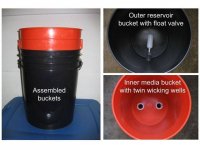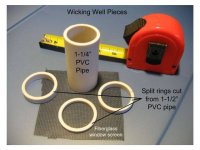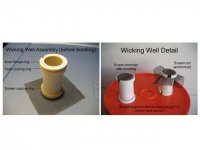32 c is almost 90 f. I'm an old fish keeper and I know free o2 molecules begin disappearing from water around 85 f and are almost totally gone by 90f.
But the water doesn't stay at 32c around the clock, so as it cools it probably picks up some o2 from the air because of atmospheric partial pressures. This is probably occurring on a 24 cycle given enough of a temperature difference.
Also, there could be some kind of a gas expansion and contraction inside the rigid container due to the effects of heating and cooling. Maybe this could cause some “breathing”.
Condensation and droplets dripping down the sidewall could contribute to o2 concentration in the solution.
And, of course, as water is used by the plant it must be displaced by something.
The containers stuck through the lid must be full of “air” type roots now.
Whatever the reasons, it's working!
Do you think you'll have enough time to get a little bud?
Got any shots of the tops of the plants?
But the water doesn't stay at 32c around the clock, so as it cools it probably picks up some o2 from the air because of atmospheric partial pressures. This is probably occurring on a 24 cycle given enough of a temperature difference.
Also, there could be some kind of a gas expansion and contraction inside the rigid container due to the effects of heating and cooling. Maybe this could cause some “breathing”.
Condensation and droplets dripping down the sidewall could contribute to o2 concentration in the solution.
And, of course, as water is used by the plant it must be displaced by something.
The containers stuck through the lid must be full of “air” type roots now.
Whatever the reasons, it's working!
Do you think you'll have enough time to get a little bud?
Got any shots of the tops of the plants?







